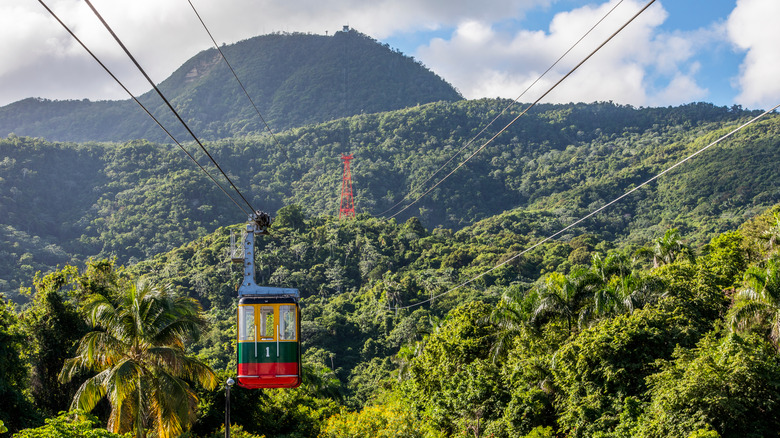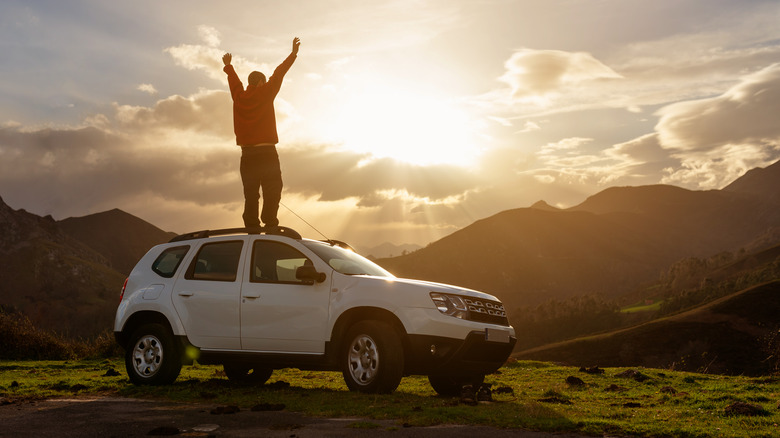Do You Need To Physically Prepare For Trips To High-Altitude Cities?
You'll find some of the best travel destinations across the world high above sea level, offering some of the most stunning views you will ever see. Situated at over 7,000 feet above sea level, Mexico City stands at about a mile-a-half up compared to the ocean (per Mexperience). And in the South American Andes, you can find the city of Cusco, Peru, sitting at over 11,000 feet above sea level (according to Peru Rail).
If you have lived most of your life somewhere pretty close to sea level, you may experience altitude sickness when visiting high-altitude cities like these, according to WebMD. Acute Mountain Sickness (AMS) has symptoms include dizziness, headache, and nausea. You can feel these symptoms any time you're above 8,000 feet, even if you aren't on a hiking expedition.
But why do some of us feel sick when we're higher in the sky? Closer to sea level, the atmospheric pressure is higher and more dense. The further you go into the altitude, the lower atmospheric pressure gets, according to National Geographic. And that high-altitude air is less dense, which is why many mountain pros call it "thin air." The good news is that you can prepare for these low-pressure cities leading up to your trip.
How to fend off altitude sickness before your trip
While some of us may not feel great the first few days of breathing that "thin air," AMS symptoms usually dissipate within a day if you descend a thousand feet, according to the Cleveland Clinic. Though less common, the Cleveland Clinic notes that High-Altitude Pulmonary Edema (HAPE) and High-Altitude Cerebral Edema (HACE) require immediate medical attention.
A Mayo Clinic ASAP study outlined simple steps that could make your high-altitude travel less dizzying. Planning your trip and including adequate times to adjust to the higher elevation could be key for preventing AMS, HAPE, or HACE in the first place. Consider adding an extra day into your trip dedicated to relaxing in your high-altitude city, skipping out on caffeine and alcohol while you let your body acclimate to being thousands of feet above sea level.
While you're in your high-altitude destination, try to limit the amount of caffeine and alcohol you consume. Vacations can require us to be up for hours at a time and are all about having fun, so we aren't saying to skip out on your coffees and margaritas all together. However, dehydration makes it more difficult for your body to adjust to high altitudes.
To combat dehydration, start drinking plenty of water before your trip. The Mayo Clinic's study recommends drinking 2-3 liters of water per day before your trip and having a 1 liter bottle of water with you at all times while you're at your destination.
Medications that can help you adjust to the high altitude
Certain over-the-counter medications and prescription drugs have been shown to help travelers acclimate to high-altitude locations. The Mayo Clinic's ASAP study notes that acetazolamide (Diamox) and dexamethasone, which require prescriptions, can be helpful aids in adjusting to extreme elevations. Consult with your doctor before deciding whether to take a prescription medication for the high altitude.
For more casual travelers, you likely will not need medication to treat the rapid ascents that mountaineers often face. Ibuprofen and acetaminophen can help fend off some AMS symptoms, according to a study published in the Journal of Emerging Medicine. Taking over-the-counter medications like ibuprofen and acetaminophen before you have reached your destination can make the adjustment to the low pressure easier on your body.
Some natural supplements like Gingko Bilboa could help with acclimation. Though Mayo Clinic's study notes that affirmative research results have not proven Gingko to be better than a placebo, its ability to improve circulation and lower blood pressure could make some symptoms of AMS less noticeable.
But above all, get plenty of rest during your high-altitude trip
While you may have an itinerary chalked full of exciting plans, be sure to get plenty of rest during your trip. The Mayo Clinic's study notes that, in reality, many of us do not prioritize sleep while on vacation. Between plane flights and early morning wake up calls, we typically do not stick to our normal sleep schedules when traveling. However, you are more likely to develop AMS if you arrive at your high-altitude destination excessively tired and dehydrated. Don't just bank on sleeping on your flight to catch up on sleep. Include some shut-eye time in your travel itinerary for once you have gotten to your destination.
While AMS usually is not serious, certain people could be more at risk for developing more severe forms of altitude sickness. But organizing your trip well in advance can help you ensure that you have taken the necessary steps to prevent altitude sickness when traveling to a high-altitude city.



